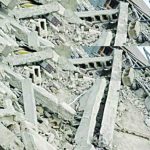...To get all news updates, Join our WhatsApp Group (Click Here)
Also Join our WhatsApp Channel (Click Here)
Every age has its chronicles, every era its historians. Sometimes, what they capture is history told in a hurry, with events and defining moments captured in the gush.
Sometimes it is introspection, with the passage of time, providing both perspective and clarity.
No medium has the capacity to capture epochal moments and preserve them for posterity as much as photography does. It is both witness and participant, and this is exactly what artist and portraitist Iké Udé achieves with his body of work; an idealized portrayal of Nollywood icons—from established actors like Genevieve Nnaji and Stephanie Okereke to newbies like Kehinde Bankole and Linda Ejiofor and from Kunle Afolayan to Dame Taiwo Ajayi-Lycett; this is Nollywood history told powerfully in pictures with a generation defined by pretty faces, crow’s feet, varicose veins, pouts and piercing gazes.
In capturing these stars and star-makers who oil the engines of the second largest movie industry in the world, Iké Udé is establishing for posterity the pioneers and icons of Nollywood at a moment of transition but by the very act of documentation, Iké Udé is inserting himself into the frame as participant in this filmic universe called Nollywood.
In his portraits, you will find Nollywood in all its glory from crown princes to princelings, debutantes to doyennes, power brokers to power players—many of them captured at the dawn of their careers and some at the very apogee and twilight of theirs.
These are iconic portraits drawn at moments of superb clarity when these stars of Nollywood are making the transition from legend into immortality.
What is Nollywood? The history of Nollywood is as fantastic and hydra headed as the stories that propel its plots. Did it begin with Living in Bondage or is its provenance in another epoch?
The story that many love to tell is of a businessman who finding himself stuck with a stack of slow moving VHS video cassettes decided to record something in them and sell them as home videos.
That man is Ken Nnebue and his era and genre defining movie, Living in Bondage, opened a new vista in Nigerian entertainment, created an industry now ranked as second largest in the world and introduced Nigeria to celebrity culture as movie stars began to inhabit a rarefied firmament hitherto unknown in these climes.
Lagos, city of dreams and phantasmagoria, is the home of Nollywood. But Lagos is not really a city. Lagos is, in many ways, a garden, a fabulous tableau where we go to harvest dreams, sometimes plentiful, oftentimes lean.
This is the Lagos into which smart young men and women streamed in the early 1990s seeking fame and fortune and Nollywood provided answers to their quests turning nascent actors and actresses like Richard Mofe Damijo, Ramsey Noah, Segun Arinze, Omotola Jolade Ekeinde, Genevieve Nnaji and Rita Dominic into household names. Where the National Television Authority (NTA) had provided some measure of fame for actresses like Barbara Soky and Mildred Iweka, who both found success as soap opera stars, Nollywood expanded the scope and reach taking the emergent stars from regimented time-belts to video players in private homes stretching from Lagos to Lusaka.
It is therefore fitting that Iké Udé would choose Lagos as the locale for his Nollywood portraits; a project that saw the artist, universally acknowledged as a master of the self-portrait, producing over 60 studies of Nollywood actors, actresses and power brokers who sat for the artist over two visits to the city.
What do photographic portraits do? They capture a moment in time and in capturing moments, they assume a cryogenic effect by freezing time for posterity. Iké’s genius lies in achieving that freezing of time.
There is a sharp shift in portraits by Iké Udé that are, as earlier mentioned, usually full length and defined by a quirky dandification, an almost coloring in of the subject into his background—something Iké Udé has explained as coming from his past as a painter. “I was formerly a painter, hence, my photographs employ a painterly language and longer-time process in the making of the pictures.” The “making-ness” of the picture is the definitive word because the portraits that emerge are no longer just pictures showing a moment of time captured by exposed film; they become works of art realized over periods of time.
Iké’s subjects and the portraits that emerge are unique. Even though shot in Lagos, the environment is all his, a seemingly otherworldly tableau that evokes the phantasmagoria that is Lagos.
There is in Iké Udé’s portraits a unique synergy, an alchemy almost, in which image and background become one with the subject subsumed in the tableau while the tableau becomes a part of the subject. There is only one word for that—magic.
But then there is more; something quaint and quirky, expressed in his dandification of his subjects and the almost dreamlike background that accompanies his portraits.
The portraits produced by Iké Udé are studies in form and color compelling your gaze to linger and forcing you always to experience them as conversation pieces.
Nollywood has captured the African imagination not just on account of the vast DVD sales—often pirated—but largely on account of the dedicated Africa Magic channels on the panAfrican cable network, DSTV.
The term Africa Magic has come to embody the unique narratives that drive the movies and the directors’ constant resort to the deus ex machina of the fetish and fantastic in their resolution of the plots.
That term is uniquely suited to Iké Udé’s portraits with their exuberant colors, their other-worldly essence, the quirky poses and frequent insertion of a bottle or cat or dog into the tableau. All these add to the otherworldly-Africa-Magic feel of the portraits.
While Iké Udé’s wide-ranging and comprehensive work must be singled out for the singularity of its purpose, breath of vision and comprehensive girth, one must point out that he is not the first to document eras and epoch using the cyclopic eye of the lens.
The ultimate reference would be to a sixteenth century Renaissance artist, Raphael, whose famous large composition, The School of Athens, painted between 1509 and 1511, is the template for Iké Udé’s Nollywood masterpiece. Udé’s masterly 26 x 16 feet mural, The School of Nollywood— executed between 2014 and 2016—is the culmination of his Nollywood portraits.
Udé’s masterpiece is a historical document, a definitive snapshot of an era, a larger-than-life representation of an industry, a portrait that will provide bragging rights for those captured within its frame.
Nollywood sweetheart, Genevieve Nnaji is the centrepiece of the large composition, reclining on a royal-blue chaise longue and looking regal as befits the queen of Nollywood. She has taken the place of Plato and Aristotle, the main figures of the Athenian school of philosophy in Raphael’s fresco.
But it is Iké Udé’s cameo that will excite the keen observer because in keeping with the earlier observed role as observer and participant. Udé, like many artists of antiquity such as Raphael as well as Rembrandt and many contemporary cinema auteurs such as Alfred Hitchcock, Woody Allen, Spike Lee—has managed to insinuate his visage into The School of Nollywood frame in a beguiling case of peek-a-boo
You can get every of our news as soon as they drop on WhatsApp ...To get all news updates, Join our WhatsApp Group (Click Here)
Also Join our WhatsApp Channel (Click Here)















